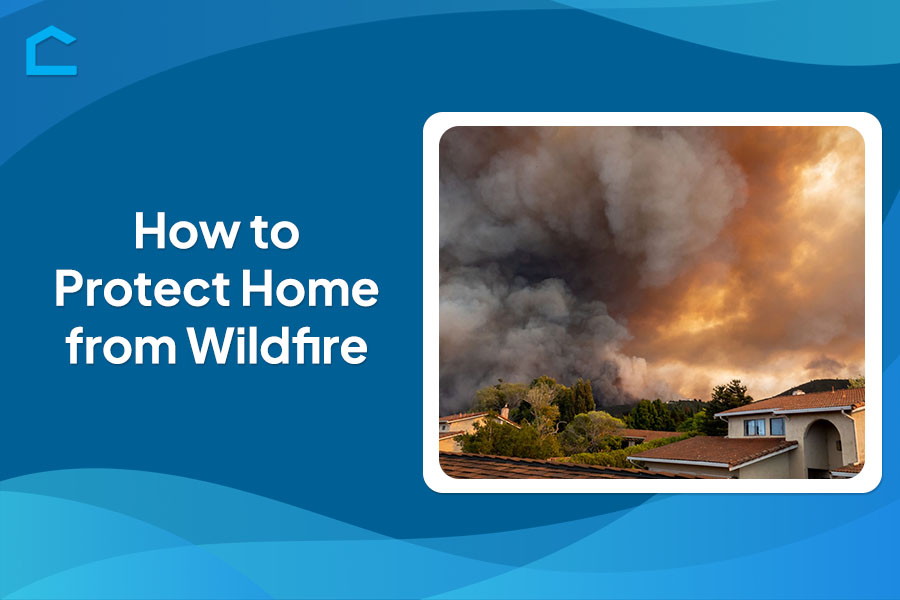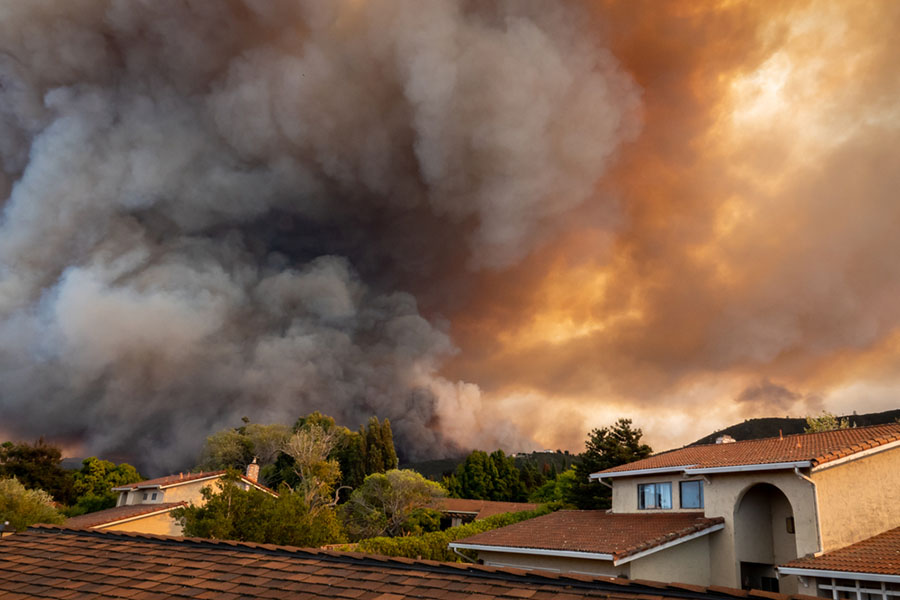How to Protect Home from Wildfire

As climate change intensifies and wildfire seasons grow longer and more destructive, wildfires can strike with little warning, ravaging everything in their path. Knowing how to protect home from wildfire becomes increasingly crucial.
In this guide, we cover strategies for how to protect your home. Learning effective preventive measures could mean the difference between a standing home or a pile of ashes when the smoke clears.
Brace yourself as we dive into the intricate details, empowering you with the knowledge on how to protect house from wildfire!

Source: shutterstock.com / Photo Contributor: Sergey Kamshylin
Understanding Wildfire Risks
Wildfires are uncontrolled fires fueled by dry vegetation that spread rapidly. They originate from natural causes like lightning or human activities like campfires or arson.
Climate change exacerbates wildfire risks by raising temperatures and drying out vegetation. It also increases fire starts with drought conditions and more thunderstorms.
Human factors, like increased population in wildland areas, also heighten risks by bringing accidental fire sources closer to homes. Strong winds can escalate wildfires by carrying flames and burning embers over firebreaks. So, both environmental factors and human actions contribute to the growing frequency and intensity of wildfires.
How to Protect Home From Wildfire
Creating defensible space
One of the most effective ways to protect your home from wildfire is by creating defensible space. Defensible space means clearing vegetation around your home to slow or stop the spread of wildfires. This buffer zone gives firefighters safer access and shields your home from direct flames and radiant heat.
Without defensible space, homes are at significantly higher risk during wildfires. To establish effective defensible space, divide your property into two zones:
- Zone 1 extends 30 feet from your home’s exterior. Clear all dead plants, woodpiles, leaves, and other combustible materials from this zone.
- Zone 2 extends 100 feet further out. Here, reduce vegetation height and space plants and trees apart to prevent wildfire spread.
Fire-resistant landscaping
Landscaping plays a crucial role in reducing wildfire risks around your property. You can achieve this by using fire-resistant plants like succulents, lawn grass, and hardwood trees with high moisture content. But avoid resinous trees such as pine that produce flammable sap.
You can also use non-combustible landscaping materials such as gravel, brick, and rocks. These materials act as firebreaks and do not provide fuel for wildfires. It’s important to maintain well-watered gardens and trim vegetation properly.
However, dry vegetation acts as kindling, accelerating the spread of wildfires. Consider installing sprinkler systems for thorough watering. Additionally, use non-flammable hardscaping like gravel paths or stone walls to create barriers that might slow a wildfire’s advance and prevent flames from reaching more vegetation.

Source: shutterstock.com / Photo Contributor: David A Litman
Home hardening materials
You can boost your home’s fire resistance with smart material choices such as composite shingles or metal roofing. Opt for stucco, brick, or fiber cement siding over wood.
To protect your home effectively, enclose eaves and overhangs to prevent ember accumulation. You may install non-combustible mesh screens on all vents and openings to keep embers out of attics and crawl spaces.
Also, consider using ember-resistant vents specifically designed for wildfire protection. Don’t overlook small details – seal any exterior gaps larger than 1/8 inch to prevent embers from entering. Use caulk for tiny cracks and sheathing for larger openings.
Emergency preparedness
In addition to physical preparations, it’s crucial to have an emergency preparedness plan. Develop and regularly practice an evacuation plan with your family. And ensure everyone knows multiple exit routes from your neighborhood and designate a meeting spot.
Furthermore, prepare emergency kits containing non-perishable food, water, batteries, and medications for each family member. You need to keep these kits readily accessible in both your home and car.
You should also stay informed about fire danger and weather conditions. Listen for evacuation orders and wildfire updates. If other communication methods fail, a battery-powered radio can be invaluable for receiving emergency information.
Installing fire safety equipment
To further safeguard your home, consider installing outdoor fire sprinklers. An exterior sprinkler system can extinguish small fires and pretreat the home before wildfires hit. If possible, you should connect it to an alternative water supply.
Interior safety measures
You should have multiple fully charged fire extinguishers ready in your home. Teach all family members how to use them correctly. You should keep extinguishers in easily accessible spots such as kitchens and garages.
Additionally, use dual-paned tempered glass windows. They can withstand radiant heat better than regular glass. Plus, you may install fire-resistant shutters or cover windows with plywood. These measures prevent radiant heat damage and stop embers from entering your home.

Source: shutterstock.com / Photo Contributor: noomcpk
Conclusion
As climate change intensifies and wildfire seasons become more severe, knowing how to protect your home from wildfire is necessary. For this purpose, we explored essential strategies, from creating defensible space and fire-resistant landscaping to using resilient building materials and preparing emergency plans.
So, by implementing these measures, you might strengthen your home against nature’s fiercest threats and ensure greater safety for your family and property. Prepare now to transform your home into a resilient fortress against wildfires!
